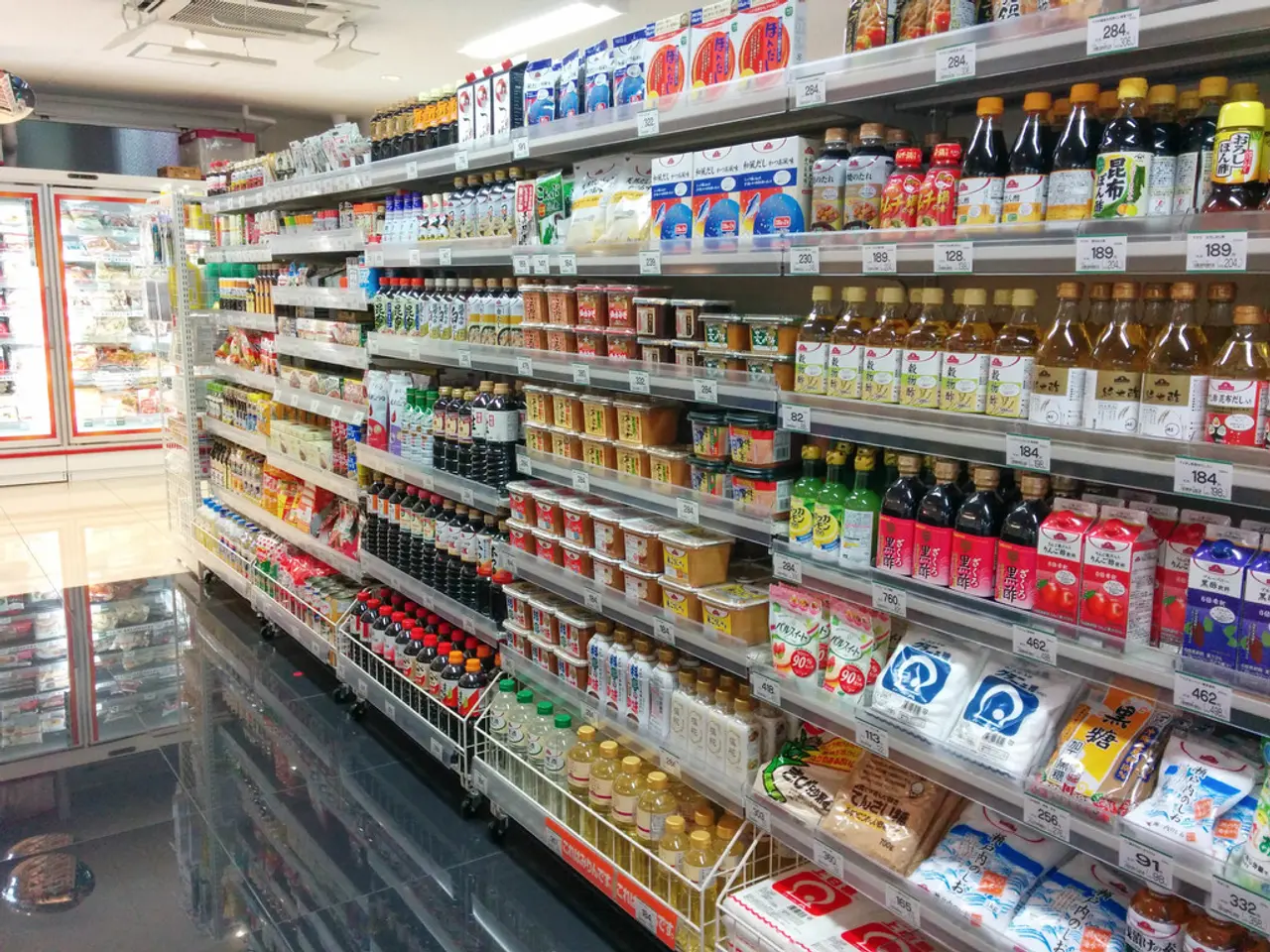Adidas sets goal for direct-to-consumer sales to reach 50% by 2025
Adidas Unveils Ambitious Four-Year Plan to Transform Business Model
Adidas, the German sportswear giant, has announced a bold four-year strategic plan, dubbed "Own the Game," to reshape its business model and become a direct-to-consumer (DTC) led company. The goal is to account for 50% of net sales from DTC channels by 2025, up from 30% in 2019 [1].
A key aspect of this strategy involves a substantial increase in marketing spend, with Adidas planning to invest an additional €1.1 billion on marketing between 2021 and 2025 to drive brand momentum and digital engagement [1].
Digital acceleration is another crucial element, with Adidas focusing on enhancing e-commerce capabilities and delivering tech-led retail experiences to meet consumers directly. This includes innovations in storytelling, emotional branding, and embedding Adidas in global culture [1][5].
Product innovation and localized relevance are also at the heart of the plan. Adidas aims to transition from high-profile collaborations like Yeezy to a diversified product pipeline, emphasizing high-performance running shoes and culturally resonant lifestyle products. The company is tailoring its product lines to regional tastes, especially in growth markets like Greater China, Japan, and South Korea [2].
Operational shifts are necessary to support this new DTC focus. Adidas is investing in supply chain and inventory management to ensure agility and minimizing margin pressures despite upfront spending [1][2].
The strategic shift to DTC aims to increase customer loyalty, reduce reliance on third-party retailers, and improve gross margins by capturing higher full-price sales. However, it requires significant upfront investment and operational change, with ongoing risks related to product innovation maintaining momentum and managing inventory efficiently [1][2].
Adidas is also focusing on the women's market, aiming for annual growth in the mid-teens. The company recently launched a women's-focused product line called Formotion, which it describes as its "most supportive activewear to-date" [6].
In addition, Adidas is introducing a new consumer proposition, called Sportswear. This will allow for the creation of a new identity, development of a dedicated sports lifestyle collection, and rollout of sportswear-specific experiences at the point of sale [3].
Adidas' sustainability aims include making nine out of 10 of its products sustainable by 2025, being climate neutral in its own operations by 2025, and being climate neutral overall by 2050 [7]. The company has partnerships with sustainability-focused brands like Allbirds [8].
Adidas aims to own 95% of its sales growth over the next five years in the product categories of Soccer, running, training, outdoor, and lifestyle [4]. The retailer's DTC business was 30% in 2019 and 40% in 2020 [9]. Adidas expects the strategy to lead to annual net sales growth of between 8% and 10%, and annual net income growth of between 16% and 18% [4].
In conclusion, Adidas' "Own the Game" four-year plan is a bold move to reshape its business model around a DTC-led strategy fueled by digital expansion, marketing investment, localized product innovation, and enhanced consumer engagement to capture half of its sales from direct channels by 2025 [1][2].
References: [1] Adidas unveils four-year strategy to become a DTC-led company. (2021). Retrieved from https://www.reuters.com/business/retail-consumer/adidas-unveils-four-year-strategy-become-dtc-led-company-2021-02-02/
[2] Adidas' new strategy: A focus on direct-to-consumer sales. (2021). Retrieved from https://www.cnbc.com/2021/02/02/adidas-new-strategy-a-focus-on-direct-to-consumer-sales.html
[3] Adidas to launch new consumer proposition: Sportswear. (2021). Retrieved from https://www.sportsonearth.com/article/5880859/adidas-launch-new-consumer-propositionsportswear
[4] Adidas' four-year plan: What it means for the company's future. (2021). Retrieved from https://www.forbes.com/sites/jenniferhicks/2021/02/02/adidas-four-year-plan-what-it-means-for-the-companys-future/
[5] Adidas' digital acceleration: A focus on storytelling and emotional branding. (2021). Retrieved from https://www.campaignlive.co.uk/article/adidas-digital-acceleration-focus-storytelling-emotional-branding/1757203
[6] Adidas Formotion: The most supportive activewear to-date. (2021). Retrieved from https://www.adidas.com/us/formotion
[7] Adidas' sustainability goals: A commitment to climate neutrality. (2020). Retrieved from https://www.adidas.com/us/sustainability
[8] Adidas partners with Allbirds: A step towards sustainability. (2020). Retrieved from https://www.cnbc.com/2020/11/04/adidas-partners-with-allbirds-a-step-toward-sustainability.html
[9] Adidas' DTC growth: From 30% in 2019 to 40% in 2020. (2021). Retrieved from https://www.statista.com/statistics/1167632/adidas-digital-sales-by-region/
- Adidas' ambition extends beyond sports, targeting policy, business, finance, and investing, aiming to own 95% of its sales growth in product categories such as soccer, running, training, outdoor, and lifestyle.
- The company's strategic partnerships with sustainability-focused brands like Allbirds highlight its commitment to a greener future, with a goal of making nine out of ten of its products sustainable by 2025 and achieving climate neutrality in its own operations by 2025.
- Adidas' focus on lifestyle products and localized relevance, as seen in its transition from high-profile collaborations to a diversified product pipeline, aligns with current trends in culture, reflecting changes in consumer lifestyles.
- Recognizing the importance of technology, Adidas is investing in AI and digital platforms, enhancing e-commerce capabilities and creating tech-led retail experiences to meet consumers directly.
- In an effort to reduce its reliance on third-party retailers, Adidas is strengthening its trade relations, aiming to account for 50% of net sales from direct-to-consumer (DTC) channels by 2025.
- The company's increased marketing spend and investment in digital acceleration signal a growing focus on war rooms, utilizing data-driven insights to create engaging marketing campaigns that drive brand momentum and digital engagement.




